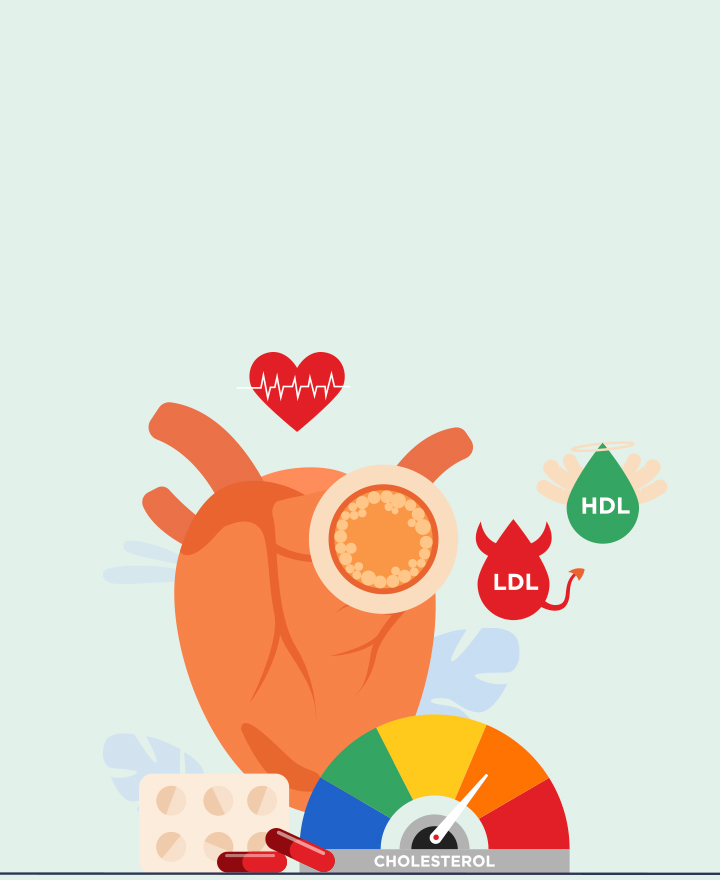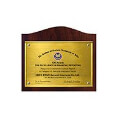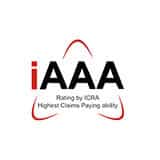

Types of Cholesterol Tests – What do the results say?
The term, ‘fat’ is usually construed as negative, but not all fats are bad for the body. Take cholesterol for instance. It is one of the most talked about types of fats and can be of two types – good and bad. Cholesterol stabilizes the outer membranes of our cells. That said, high levels of bad cholesterol can be dangerous for the body. It can even increase the risk of heart-related issues. To keep track of that, you should get your cholesterol levels tested regularly.
Types of Cholesterol Test
When it comes to cholesterol tests, there is a single test you need to take. A complete cholesterol test or a lipid profile/panel measures the levels of four different types of fats in the blood in terms of milligrams per decilitre (mg/dL). The ideal levels vary based on the age and gender of the person as well as existence of underlying conditions such as diabetes. Guidelines may also vary from country to country.
• Total cholesterol
This gives you the overall blood cholesterol level. A certain amount of cholesterol is required by the body to produce certain hormones and release Vitamin D. It is also required by the liver to create bile for proper digestion. High cholesterol levels are referred to as hypercholesterolemia while low cholesterol levels are termed as hypocholesterolemia. The latter is not very common.
• Low-density lipoprotein (LDL) cholesterol
Low-density lipoprotein (LDL) cholesterol is also known as bad cholesterol. The cholesterol test will give you the levels of LDL cholesterol and indicate whether it is at a harmful level. When this type of fat builds up in the blood, it can cause fatty deposits or plaque to develop on the arterial walls. This narrows the blood vessels and, in turn, reduces blood flow. Extended build-up of this plaque can cause the blood vessels to rupture and lead to a stroke or heart attack.
• High-density lipoprotein (HDL) cholesterol
High-density lipoprotein (HDL) cholesterol is also known as good cholesterol. The cholesterol test will indicate whether your blood has enough HDL cholesterol. This is a required fat as it plays a role in reducing bad cholesterol levels and thus keeps the arteries open.
• Triglycerides
A cholesterol test will tell you about the triglyceride levels in the blood and what risk they pose to your health. This type of fat is created when your calorific intake is higher than the body’s requirements. They are carried by very-low-density lipoproteins (VLDL) cholesterol cells. High triglyceride levels can cause obesity and are also linked with excessive alcohol intake and a sedentary lifestyle.
• Others
The test will indicate other parameters such as the levels of Non-HDL cholesterol and the ratio between cholesterol and HDL.
Advanced Tests
In cases where a cholesterol test shows high LDL cholesterol levels, an advanced test may be required. This test will measure the LDL particle number and break down the size and shapes of LDL cholesterol cells. It is rarely asked for.
Taking a Cholesterol Test
A cholesterol test is conducted as a blood test.
• In most cases, blood is drawn in the morning before you have consumed any food.
• You should ideally not have any food or liquids other than water for 9-12 hours before the test.
• Some doctors may ask for a non-fasting test.
• Blood is drawn from the vein and takes no more than a minute or two.
• The procedure is relatively painless and has minimal risks.
• At the most, you may feel a little soreness around the site from where the blood was drawn.
• Results are usually available within a few hours.
Once you are over the age of 20, you should get a cholesterol test at least once every 5 years.
Following up after a Cholesterol Test
High bad cholesterol and triglyceride levels can be dangerous for your body. This should be taken as a sign that you need to improve your lifestyle and eating habits. Eating a healthy,well-balanced diet and regulating the amount of alcohol can help improve cholesterol levels. You should also include more activities in your daily schedule and get fitter and maintain a healthy weight. If you smoke, this is a sign that you need to quit. In some cases, medical intervention and treatment may be required.
One of the important components of our overall wellness is also being financially secured. Healthcare emergencies can happen any time, but a good health insurance policy can protect you from such uncertain situations. To know more about Wellness and other health related tips, visit the wellness corner.
Disclaimer: This blog provides general information and discussions about health and related subjects. The information and other content provided in this blog, website or in any linked materials are not intended and should not be considered, or used as a substitute for, medical advice, diagnosis or treatment. Kindly contact your Doctor before starting a new medicine or health regime.
Related Articles
Know About The Spices That Bring Down Cholesterol
No Carbs To Skipping Meals - 5 Dieting Myths Which Might Ruin Your Fitness Goals
Effective Ways To Increase The Good Cholesterols In Your Body
Published on November 23, 2021
























 Health Insurance
Health Insurance  Travel Insurance
Travel Insurance  Car Insurance
Car Insurance  Cyber Insurance
Cyber Insurance  Critical Illness Insurance
Critical Illness Insurance
 Pet Insurance
Pet Insurance
 Bike/Two Wheeler Insurance
Bike/Two Wheeler Insurance  Home Insurance
Home Insurance  Third Party Vehicle Ins.
Third Party Vehicle Ins.  Tractor Insurance
Tractor Insurance  Goods Carrying Vehicle Ins.
Goods Carrying Vehicle Ins.  Passenger Carrying Vehicle Ins.
Passenger Carrying Vehicle Ins.  Compulsory Personal Accident Insurance
Compulsory Personal Accident Insurance  Travel Insurance
Travel Insurance  Rural
Rural